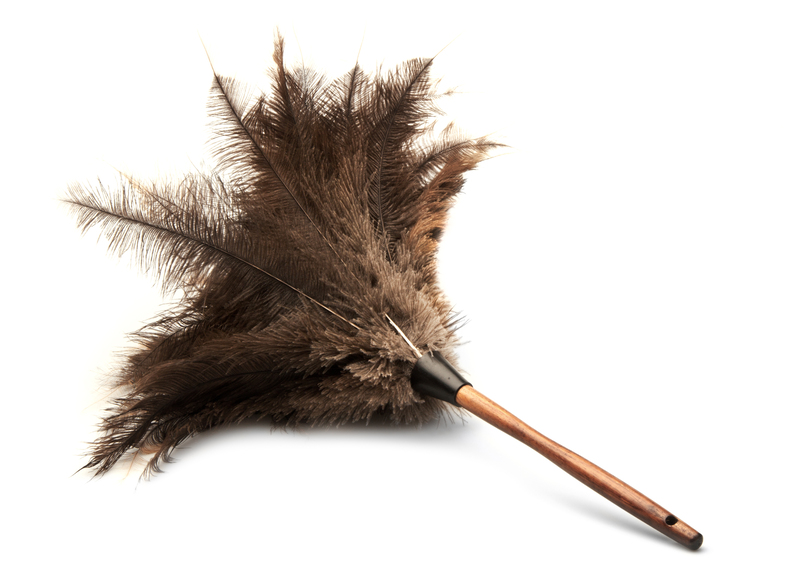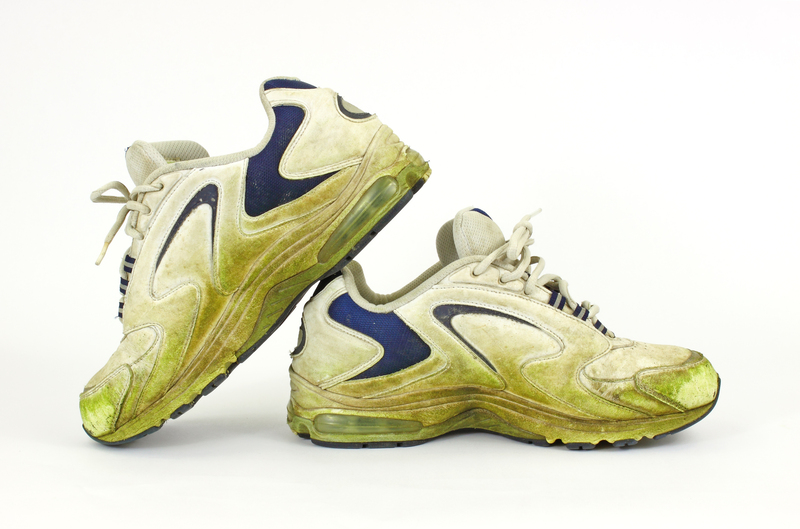Keep Mold at Bay with These Bathroom Tips
Posted on 30/05/2025
Keep Mold at Bay with These Bathroom Tips
Mold is one of the most persistent problems homeowners face, especially in moist areas like bathrooms. If left unchecked, bathroom mold not only damages surfaces and structures; it can also impact your health. If you're searching for ways to prevent bathroom mold or tackle a nasty recurring issue, you've come to the right place.
Understanding Why Mold Loves Bathrooms
The bathroom provides the ideal environment for mold growth. Mold spores are everywhere, and all they need to flourish is moisture, warmth, and organic material--three things bathrooms tend to provide in abundance. Daily showers, poor ventilation, and humidity create perfect breeding grounds for mold and mildew on walls, ceilings, grout, caulking, and even within vents or behind tiles.
Besides damage to your property, exposure to mold can trigger allergies, asthma attacks, respiratory issues, and skin irritation. That's why it's crucial to be proactive and keep mold at bay in your bathroom.

Critical Tips to Prevent Mold Building Up in Your Bathroom
1. Prioritize Bathroom Ventilation
- Install or Upgrade Your Exhaust Fan: An effective exhaust fan draws steam and moisture out of the air, helping keep your bathroom dry. Use a fan that's correctly rated for your bathroom size and let it run for at least 20 minutes post-shower. Consider a humidity-sensing fan for automatic protection.
- Open Windows & Doors: Whenever possible, open a window or leave the door ajar to increase airflow and reduce humidity. Natural ventilation works wonders, especially after hot showers or baths.
Tip: Ensure vents and fans are clean and unobstructed for optimal performance.
2. Wipe Down Surfaces After Use
- Squeegee the Shower Walls: Mold feeds on moisture left on glass doors and tile walls. Keep a squeegee handy and make it a habit to remove water after every shower.
- Dry the Tub, Sink, and Counters: Use a towel or microfiber cloth to dry wet surfaces, focusing on areas prone to water pooling.
Spotless, dry surfaces are far less inviting to bathroom mold and mildew.
3. Address Leaks Immediately
Hidden leaks are a leading cause of persistent mold issues in bathrooms.
- Check for drips beneath sinks, loose or worn caulking, and cracked grout that can allow water to seep into walls or floors.
- Inspect the plumbing behind toilets and under the tub regularly. Fixing leaks as soon as they occur prevents water from accumulating where you can't easily see it.
A small, unnoticed leak can lead to large mold infestations in just a few days!
4. Seal Grout and Re-Caulk Regularly
- Seal Grout Lines: Grout is porous and absorbs water, which can aid mold growth beneath tile surfaces. Apply a silicone-based grout sealer every six months to keep it moisture resistant.
- Replace Deteriorating Caulk: If caulk along the tub, shower, or sink is cracked, peeling, or has black stains, remove it and apply fresh, mold-resistant caulk designed for bathrooms.
Sealing and re-caulking are simple DIY tasks that make a dramatic difference in preventing hidden water intrusion and keeping mold at bay in your bathroom.
5. Clean Thoroughly and Frequently
- Use Mold-Inhibiting Cleaners: Weekly cleaning with a bathroom mold remover or homemade solution like vinegar and baking soda will keep spores in check.
- Focus on Key Areas: Clean tile grout, around faucets, under the rim of the toilet, and along shower doors--these spots are mold magnets.
- Don't Overlook Shower Curtains and Liners: Fabric and plastic alike can harbor mildew. Wash them or replace them as soon as you see staining or detect an odor.
Pro Tip: For natural cleaning, combine one part white vinegar with one part water in a spray bottle. Spray liberally on all surfaces, let sit for ten minutes, then wipe clean.
6. Control Humidity Levels
- Use a Dehumidifier: If your bathroom is naturally damp and poorly ventilated, a small dehumidifier can dramatically reduce airborne moisture.
- Monitor Humidity: Invest in an inexpensive hygrometer to monitor levels. Aim to keep humidity in your bathroom below 50% to discourage mold growth.
7. Organize and Minimize Clutter
- Keep Surfaces Clear: Items left on counters and in the shower hold moisture and block airflow, creating pockets where mold can thrive. Store toiletries in cabinets or shelves that allow air to circulate.
- Use Mold-Resistant Storage: Choose plastic, glass, or treated metal organizers rather than porous baskets or wood.
8. Upgrade Lighting
Mold prefers dark and damp places. Bright lights, especially those with UV rays, hamper its growth. Maximize natural light by opening window blinds or adding a skylight. Consider installing LED or UV lights to brighten windowless bathrooms and reduce the chances of mildew.
How to Remove Mold from Your Bathroom
Step-by-Step Mold Removal Guide
- Wear Protective Gear: Put on gloves, goggles, and, if mold is extensive, a mask to avoid inhaling spores.
- Prepare Your Cleaning Solution: Use store-bought mold remover, or mix one part bleach to ten parts water for stubborn infestations. For everyday cleaning, vinegar or hydrogen peroxide also works well.
- Apply Liberally: Spray affected areas and let the solution sit for at least 10 minutes to kill mold at its roots.
- Scrub Gently: Use a stiff brush for grout and tile or a soft cloth for more delicate surfaces. Old toothbrushes work for corners and tight spots.
- Rinse and Dry: Wipe down cleaned areas with fresh water and dry thoroughly to prevent new mold growth.
Note: Some mold is deeply entrenched within walls or ceilings. If you see large black patches, or mold reappears after cleaning, consult a professional mold remediation service for a lasting solution.
Don't Forget Hidden and Overlooked Areas
- Clean and check behind toilets and under sinks
- Pull out any free-standing shelves or organizers to check for mold underneath
- Periodically lift shower and bath mats for airing out
- Wipe down the inside of medicine cabinets and drawer bottoms
Underlining the importance: Even a small overlooked corner can become a source for a full-blown mold resurgence.
Long-term Strategies to Keep Mold at Bay in the Bathroom
- Choose Mold-Resistant Materials: In renovations or new construction, use mold-resistant drywall, paints, and backer boards.
- Select the Right Paint: Apply high-quality, semi-gloss or satin paints with built-in mildew resistance to bathroom walls and ceilings.
- Opt for Solid Surface Alternatives: Consider acrylic or composite shower walls instead of tile and grout for easier cleaning and less water absorption.
- Upgrade Your Fixtures: New low-flow showerheads and faucets reduce splash and condensation, keeping your bathroom drier overall.
Educate Everyone in the Household
Preventing bathroom mold is a team effort. Remind family members to use fans, keep surfaces clean and dry, report leaks, and refrain from dropping towels or clothing on the floor. Teaching children and guests good bathroom habits will help you win the war against mold.
Know When to Call In the Experts
Persistent mold problems, water stains on ceilings or walls, or a musty odor that lingers despite your efforts are red flags. In these cases, professional assessment and remediation may be necessary to ensure that hidden mold infestations are thoroughly eliminated.

Frequently Asked Questions About Bathroom Mold
Why does mold keep returning to my bathroom?
Repeat mold growth usually indicates an underlying moisture problem. Common issues include blocked or insufficient ventilation, leaks, water trapped beneath tiles, or using improper cleaning techniques. Address all possible moisture sources and maintain strict cleaning and drying routines to break the cycle.
What are the health risks linked with bathroom mold?
Mold can cause symptoms such as coughing, sneezing, eye irritation, skin rashes, asthma attacks, and in extreme cases, severe allergic reactions. People with compromised immune systems, children, and the elderly are particularly vulnerable. Keeping mold at bay in your bathroom helps protect everyone's well-being.
How often should I clean my bathroom to prevent mold?
At a minimum, perform a deep clean once a week using appropriate cleaners, paying special attention to tile, grout, and wet surfaces. Daily habits--such as wiping down walls and running the fan--make the biggest difference in avoiding bathroom mildew and mold.
Can essential oils prevent mold in the bathroom?
Certain essential oils (like tea tree, eucalyptus, and lavender) have natural antifungal properties. Add a few drops to your cleaning solution for a mold-fighting boost and pleasant scent. However, they should complement--not replace--proper moisture control and cleaning.
Conclusion: Creating a Mold-Free Bathroom for Good
Mold doesn't stand a chance when you are consistent and vigilant. By combining practical bathroom tips--from enhancing ventilation and moisture control to diligent cleaning--you can effectively keep mold at bay for good.
Implementing these strategies will maintain your bathroom's cleanliness, protect your health, and preserve your home's value. Remember, a dry and well-ventilated bathroom is a mold-resistant bathroom!
Now is the perfect time to put these mold-prevention tips into action. Stay proactive, and enjoy a healthier, fresher bathroom every day!





